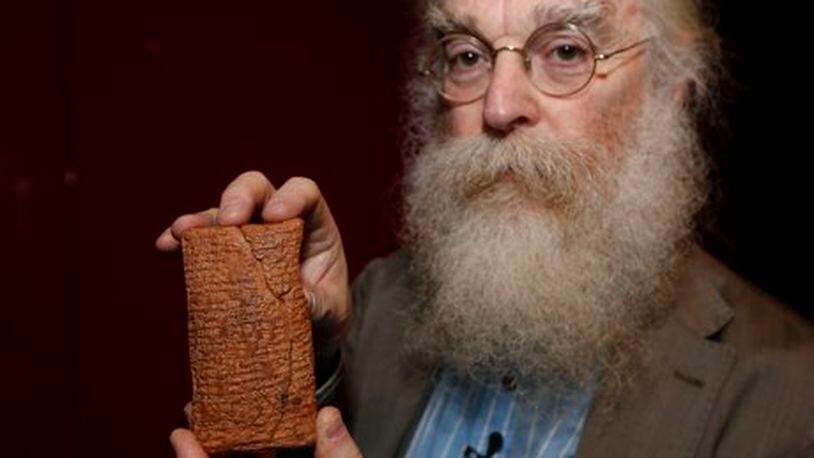It turns out Noah's Ark may have looked a bit more like your cereal bowl than the Queen Mary.
At least according to researchers hailing what some antiquities experts are calling "one of the most important human documents ever discovered."
A recently deciphered 4,000-year-old clay tablet from ancient Mesopotamia - modern-day Iraq - reveals striking new details about the roots of the Old Testament tale of Noah.
The tablet went on display at the British Museum on Friday, and soon engineers will follow the ancient instructions to see whether the vessel could actually have sailed.
It tells a similar story, complete with detailed instructions for building a giant round vessel known as a coracle - as well as the key instruction that animals should enter "two by two."
It's also the subject of a new book, "The Ark Before Noah," by Irving Finkel, the museum's assistant keeper of the Middle East and the man who translated the tablet.
Finkel got hold of it a few years ago, when a man brought in a damaged tablet his father had acquired in the Middle East after World War II.
It was light brown, about the size of a mobile phone and covered in the jagged cuneiform script of the ancient Mesopotamians.
"It was really a heart-stopping moment - the discovery that the boat was to be a round boat," said Finkel, who sports a long gray beard, a ponytail and boundless enthusiasm for his subject. "That was a real surprise."
And yet, Finkel said, a round boat makes sense. Coracles were widely used as river taxis in ancient Iraq and are perfectly designed to bob along on raging floodwaters.
"It's a perfect thing," Finkel said. "It never sinks, it's light to carry."
Other experts said Finkel wasn't simply indulging in book-promotion hype. David Owen, professor of ancient Near Eastern studies at Cornell University, said the British Museum curator had made "an extraordinary discovery."
Elizabeth Stone, an expert on the antiquities of ancient Mesopotamia at New York's Stony Brook University, said it made sense that ancient Mesopotamians would depict their mythological ark as round.
"People are going to envision the boat however people envision boats where they are," she said. "Coracles are not unusual things to have had in Mesopotamia."
The tablet records a Mesopotamian god's instructions for building a giant vessel - two-thirds the size of a soccer field in area - made of rope, reinforced with wooden ribs and coated in bitumen.
Finkel said that on paper (or stone) the boat-building orders appear sound, but he doesn't yet know whether it would have floated. A television documentary due to be broadcast later this year will follow attempts to build the ark according to the ancient manual.
The flood story recurs in later Mesopotamian writings including the "Epic of Gilgamesh." These versions lack the technical instructions - cut out, Finkel believes, because they got in the way of the storytelling.
He is also aware his discovery may cause consternation among believers in the Biblical story. When 19th-century British Museum scholars first learned from cuneiform tablets that the Babylonians had a flood myth, they were disturbed by its striking similarities to the story of Noah.
He believes the tale was likely passed on to the Jews during their exile in Babylon in the 6th century B.C. And he doesn't think the tablet provides evidence the ark described in the Bible existed. He said it's more likely that a devastating real flood made its way into folk memory, and has remained there ever since.
